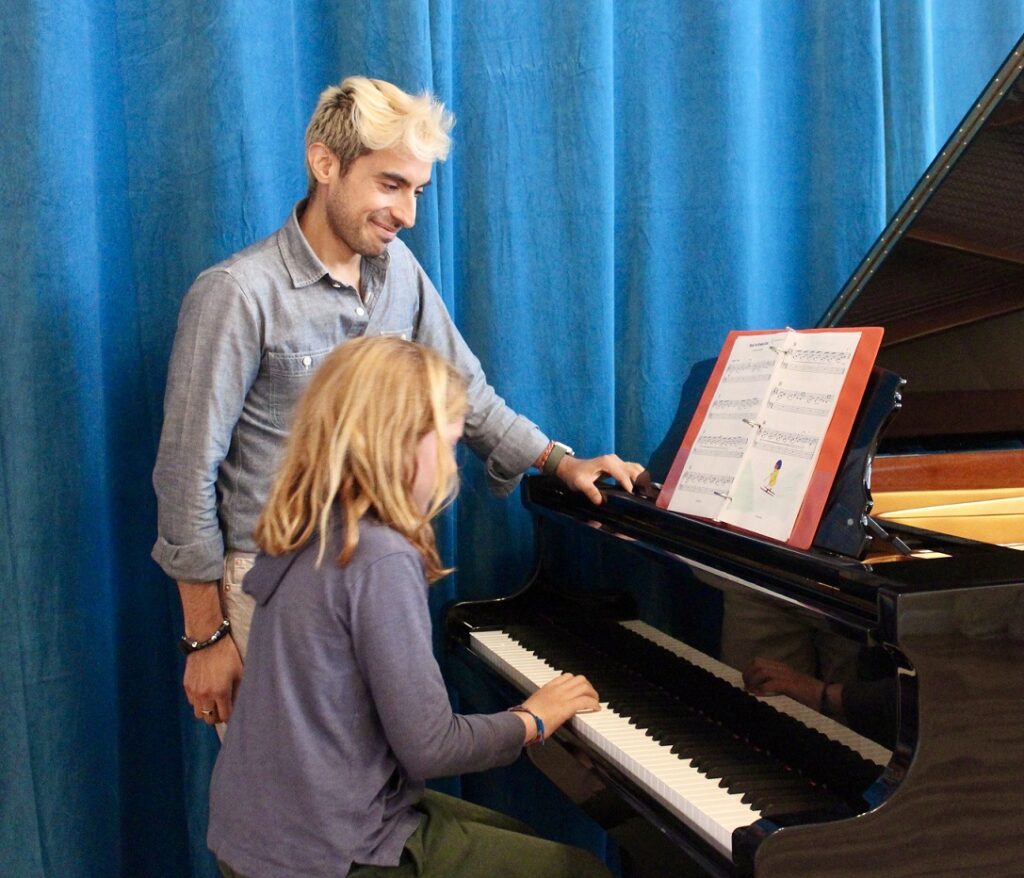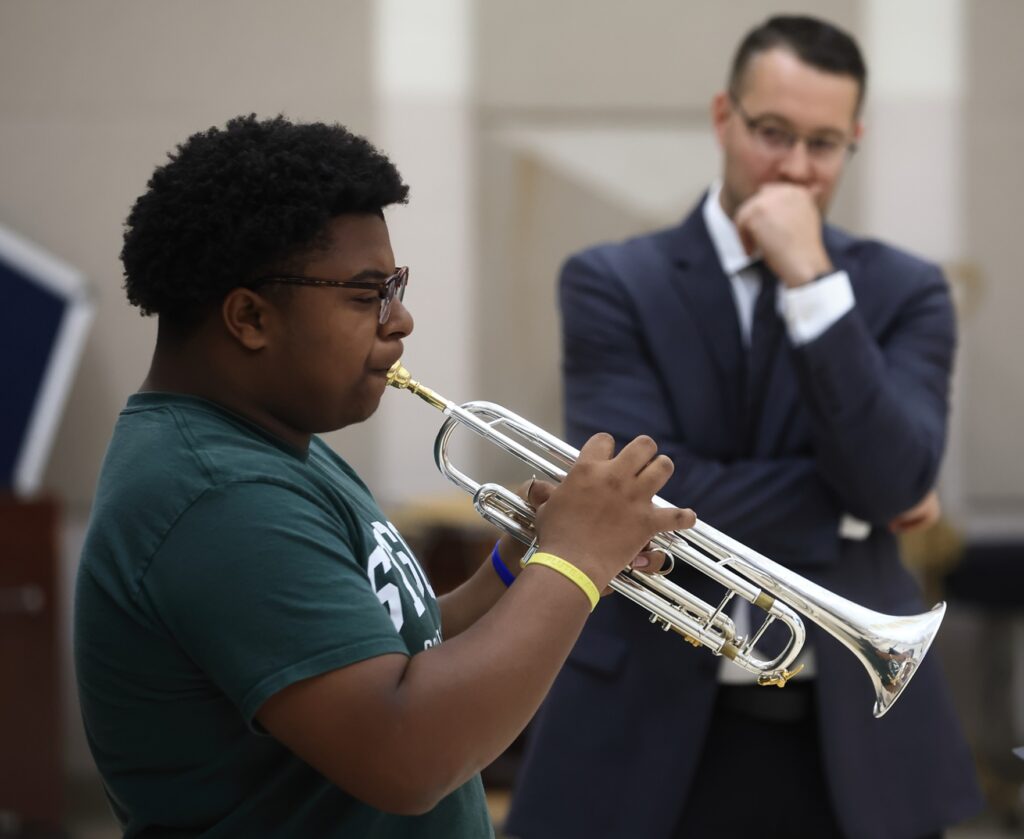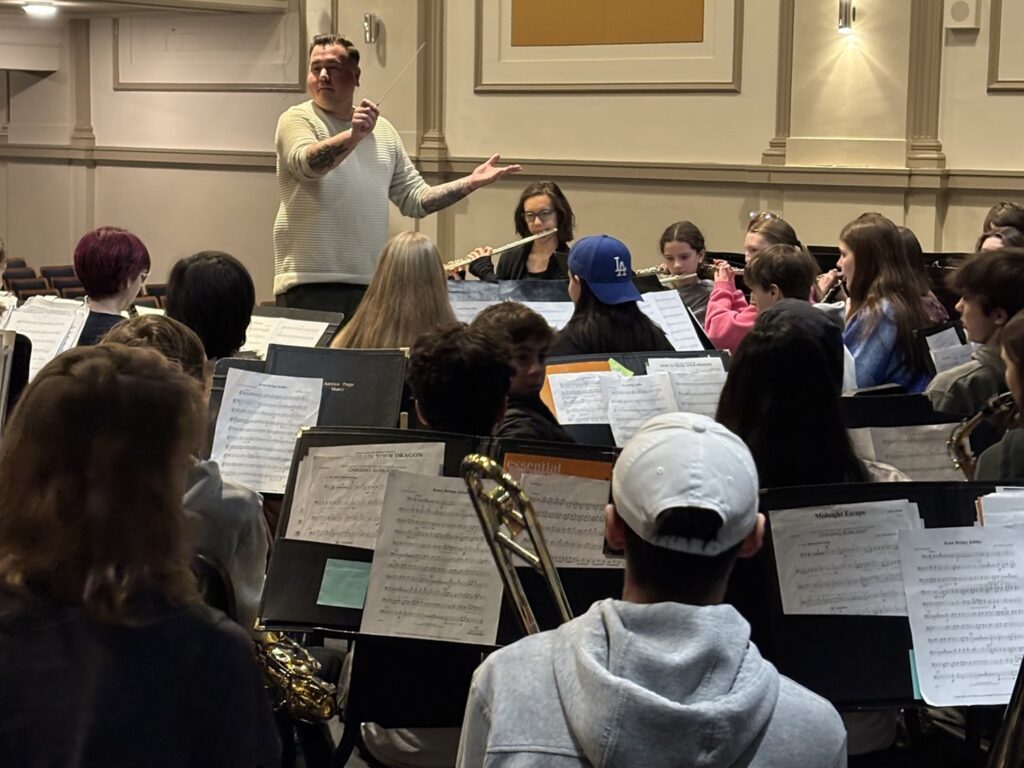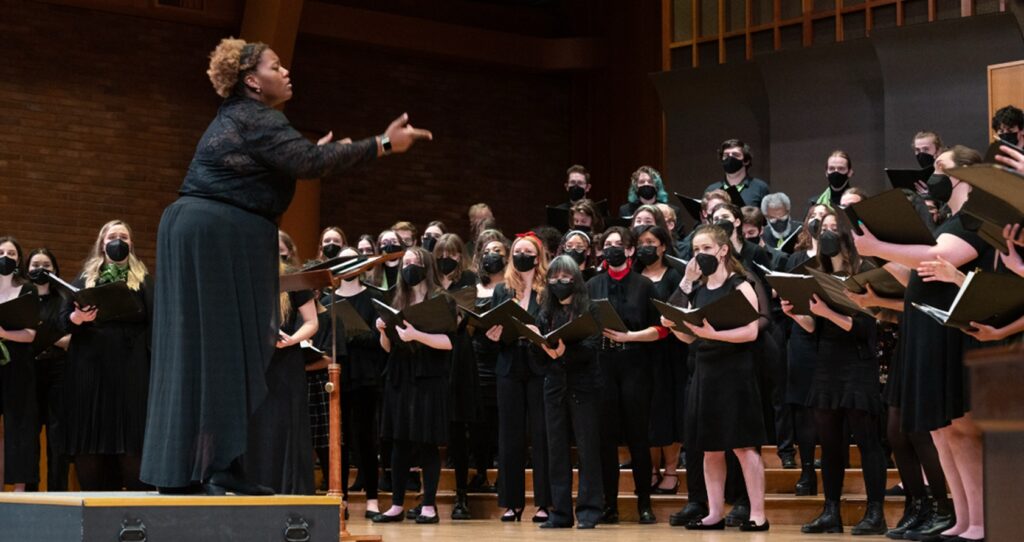Tagged Under:
5 Benefits to Creating a Keyboard Orchestra
In your group piano class, use the various “voices” of a keyboard to create an orchestra of different effects and instruments.
“The piano is not one instrument; it is one hundred instruments!” –Anton Rubinstein
A keyboard orchestra is an exciting frontier for the group-piano model. I incorporated the idea in my classroom at Cibola High School in Albuquerque, New Mexico, after watching international friends from a piano festival accompany a studio-mate using keyboards — they were the “orchestra” in his concerto. I’m still mapping out best practices and a set curriculum for running group piano like an ensemble class, but I have already seen the musical benefits in terms of student skills, outcomes and community.
I know several ensemble directors who were roped into teaching piano, and they feel overwhelmed by method books and have difficulty garnering buy-in from students. If that sounds like you, I hope keyboard orchestra might be a worthy pursuit to consider
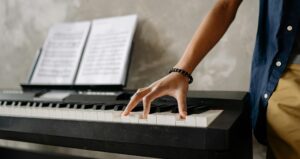
What is it?
Using the various “voices” of a keyboard, it’s possible to create an orchestra of different effects and instruments. My district, the Albuquerque Public Schools, purchased small keyboards for students to rent while we were quarantined. After we returned to in-person teaching, the keyboards were rarely used. I allowed students to rent them if they needed a practice instrument at home.
Because these keyboards are unweighted, six octaves and have no stands or pedals, I did not see a reason to use them when we had a class set of full-sized, weighted keyboards. However, after playing around with one, I realized that there was potential in their portability and voice database. As I reflected on my community and engagement problems in piano, I realized that I could start running piano like an ensemble class! That’s how the Cibola High School Keyboard Orchestra started.
Here are the five key benefits of a Keyboard Orchestra:
- Accountability and Teamwork
- Ensemble Skills and Skill-Building
- Confidence and Anxiety
- Musical Instrument Awareness
- Culture
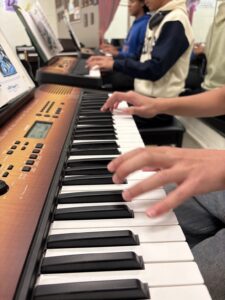
1. Accountability and Teamwork
Accountability and teamwork are hallmarks of a successful ensemble. As truancy rates rise throughout our country, I believe that the arts champion the values of teamwork and group accountability. Students in keyboard orchestra have group accountability that makes it harder to skip class than if they were only letting themselves down.
Students who feel connected to their team’s success and joy need less convincing to come to class and stay engaged. There are, of course, those students who do not have an issue getting to a group piano class, but I have found that the piano lab generally doesn’t elicit the same enthusiasm as choir or other ensemble classes. Playing piano broke my video game addiction when I was a teenager because music gave me the coolest video game with a leveling up system that will never end. Until students find some similar sense of passion, I believe the best path to their accountability is through a team framework like keyboard orchestra.
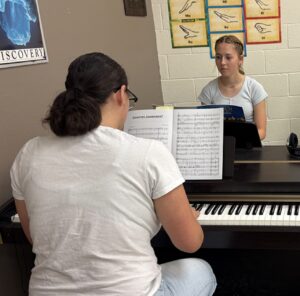
2. Ensemble Skills and Skill-Building
A pianist’s education is usually started alone — picture the standard group piano class where students wear headphones and “silently” pound away on whatever piece has been assigned to them. There are strengths to that lab process, but ensemble skills represent a stronger musicianship than the discontinuous solo run-through performance given by the typical beginner. Working in an ensemble eliminates the halting starts and stops of the beginner. That’s why duets are so effective for teaching young musicians. When coupled with a team of players, students are accountable to their peers and quickly develop the ability to jump back in (particularly when paired with a stronger player).
Although time consuming, creating specific arrangements for students can result in successful student outcomes while adding rigor. My classes are filled with students that range from beginners to advanced, so tailoring pieces for each level helps me accomplish specific goals for each difficulty range. For instance, in an arrangement of the “Jurassic Park” theme, beginning students played the iconic melody, while intermediate players played a bass line and advanced students, more peripheral and exciting passages. Each musician was appropriately challenged, which certainly dealt with class engagement issues.
You also can rely on students’ other skills. For example, use a guitarist’s understanding of chord charts or a music theory student’s budding basso continuo skills to make a unique challenge for the most advanced.
Lastly, look to easy chamber string pieces. Consider the slow movement of a Vivaldi string concerto, especially if you have overlap with a viola player from your school’s orchestra — the alto clef presents fun challenges. Not all pieces are ergonomic to the hand, so be judicious in what repertoire you assign.
When considering ensemble and skill building, it’s vital to make all students feel successful, especially at the outset of their keyboard orchestra experience. I often think of Henry Purcell’s “Fantasia Upon One Note,” where a member of the ensemble holds out a single note for the duration of the piece as others play more musically exciting passages. This often serves as my inspiration for arranging for the keyboard orchestra because it is essential for students to feel successful and have buy-in.
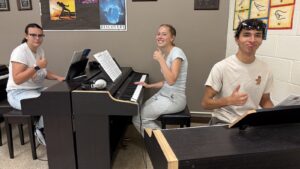
3. Confidence and Anxiety
Performance is a vital assessment in a piano class, but doing anything by yourself can be daunting at first. The keyboard orchestra presents a team effort to the joys and challenges of playing in front of people. Performing as a class can lead students to have confidence in playing by themselves — sometimes a group performance is the best, first step.
I often assess the students individually on their part before putting the keyboards together. This can save a lot of frustration and provide a temperature check on students’ progress, which is a perfect grade for the gradebook. Formal assessment can take the form of a whole-class run and section/individual tests just like in choir! I find that one of the best ways to ease student anxiety is playing in groups.
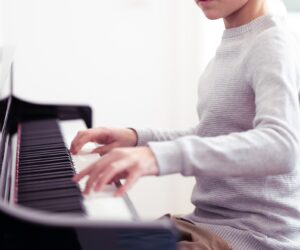
4. Musical Instrument Awareness
A keyboard will not give students the exact impression of what a flute or bassoon can do, but it certainly opens students to more orchestral sound cultures. Plus, students usually mess with the sound settings and want to explore new effects on their keyboard. So, keyboard orchestra affords students the added joy of working with a different voice than just the piano — certainly a play on Anton Rubinstein’s quote at the beginning of this article.
There are benefits to pairing students to certain instrument settings based on their ability. I often place beginning students with string sounds. A string pad setting generally affords a student to be less precise with rhythm with its delayed onset and offset. Because it blends well, a beginning student will have an easier time following others. I give more percussive or exact instrument settings (think flutes, harpsichord, etc.) to more advanced students because these sounds are more piercing, crisp and require the strongest ability to follow a score.
Use different voice settings to your advantage! Awareness of other instruments and sounds is an enrichment that can benefit the aural imagination for students on what is possible on the piano. In Dennis Alexander’s “Five-Star Ensembles for Digital Keyboard Orchestra” series, several pieces feature unique instruments (banjo, percussion, bells, etc.), which add to students’ enjoyment.
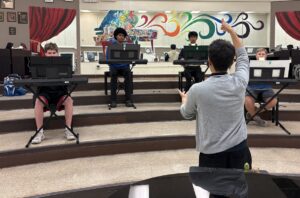
5. Community
Lastly, culture is one of the most important aspects of a keyboard ensemble. My choir students usually have more points of connection with each other throughout the semester than most of my piano students will ever have with their peers. It’s an unfortunate reality!
It’s not typical for a pianist to get ensemble work — so much of our formative education is covered through solo repertoire and technical work. As such, the keyboard orchestra incorporates the community aspect of choir or orchestra into class and enriches a pianist’s ensemble technique. Students share the ownership of the finished product, and there are few better experiences than watching students peer-teach their sections.
Keyboard orchestra represents an exciting future for the group piano class! It is transforming my students’ outcomes and experience.
____________________________
Feel free to contact me with any questions. At Cibola High, keyboard orchestra is a second semester project. During the first semester, I start with the “Hal Leonard Student Piano Library“ or “Alfred Music’s Premier Piano Express“ and self-made worksheets, especially for the absolute beginner.










